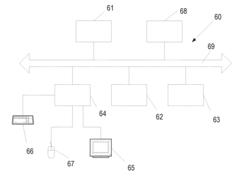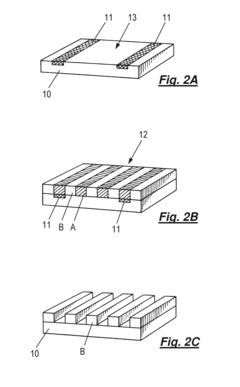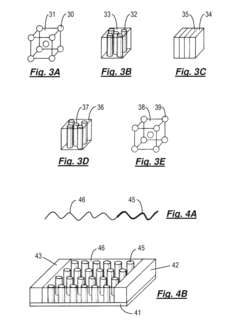Research on copolymerization and molecular architecture design for advanced materials - Eureka
OCT 8, 20244 MIN READ
Generate Your Technical Report in Patsnap Eureka
AI-Powered Innovation Solution Platform for R&D
Copolymerization Techniques and Objectives
The primary objective is to provide a comprehensive overview of the copolymerization and molecular architecture design techniques for advanced materials. This includes tracing the historical development of these technologies, identifying key milestones and breakthroughs, and highlighting the current state-of-the-art solutions.
Additionally, the report aims to shed light on the challenges and limitations faced in this field, as well as potential future research directions and innovative approaches that could lead to further advancements in material science and engineering. The ultimate goal is to offer valuable insights and strategic recommendations to guide the long-term planning and product development efforts of the organization.
Additionally, the report aims to shed light on the challenges and limitations faced in this field, as well as potential future research directions and innovative approaches that could lead to further advancements in material science and engineering. The ultimate goal is to offer valuable insights and strategic recommendations to guide the long-term planning and product development efforts of the organization.
Market Demand for Advanced Copolymeric Materials
- Growing Demand
Advanced copolymeric materials are witnessing a surge in demand across diverse industries due to their superior properties and versatility. Key application areas include electronics, automotive, aerospace, biomedical, and energy sectors. - Market Drivers
The demand is fueled by the need for lightweight, high-performance, and environmentally friendly materials. Factors like miniaturization, energy efficiency, and sustainability are driving the adoption of these materials. - Emerging Applications
Emerging applications include flexible electronics, smart textiles, advanced composites, and controlled drug delivery systems. These materials offer unique properties like conductivity, biocompatibility, and stimuli-responsiveness. - Market Potential
The global market for advanced copolymeric materials is projected to experience significant growth in the coming years, driven by technological advancements and increasing demand from various end-use industries.
Current State and Challenges in Copolymerization
- Technological Maturity
Copolymerization techniques have reached a relatively mature stage, with well-established methods like free radical, ionic, and coordination polymerization. However, challenges remain in controlling molecular architecture and achieving precise microstructures. - Molecular Architecture Control
Precise control over copolymer composition, sequence distribution, and chain topology is crucial but difficult to achieve. Current methods often lack the ability to produce well-defined copolymer architectures with desired properties. - Monomer Compatibility
Copolymerization of monomers with vastly different reactivity or polarity can be challenging, leading to compositional drift and undesirable microstructures. Strategies to overcome this issue are still being explored. - Scalability and Cost
Many advanced copolymerization techniques are limited to small-scale laboratory synthesis, hindering their industrial scalability. Cost-effective and environmentally friendly processes are needed for commercial viability. - Characterization Techniques
Comprehensive characterization of complex copolymer architectures remains a challenge, requiring advanced analytical techniques and computational modeling to elucidate their structures and properties.
Evolution of Copolymerization and Molecular Design

Existing Solutions in Copolymerization
01 Star-shaped Molecular Architecture
Certain block copolymers are designed with a star-shaped molecular architecture, where the star-shaped structure has at least two different arms or branches, imparting improved material properties like elasticity and mechanical strength.- Star-shaped Molecular Architecture: Block copolymers with star-shaped molecular architecture, featuring at least two different arms or branches, impart improved material properties like elasticity and mechanical strength.
- High Molecular Weight Copolymers: Copolymers with high molecular weights exhibit enhanced properties, such as increased strength, toughness, solvent resistance, and impact resistance, achieved through polymerization techniques or modification.
- Graft Copolymers with Improved Properties: Graft copolymers, where one polymer is grafted onto another, exhibit enhanced properties like increased impact resistance, fluidity, and natural color compared to individual components.
- Controlled Molecular Weight Distribution: Controlling the molecular weight distribution of copolymers through analysis and tailoring the polymerization process leads to improved material properties.
- Improved Rheological Properties: Copolymers can be designed or modified to exhibit improved rheological properties, such as viscosity, flow behavior, and processability, by incorporating lubricants, plasticizers, or adjusting composition and architecture.
02 Improved Polymer Property Prediction
Methods and systems are developed to improve the prediction of polymer properties and optimize polymerization processes, leading to the production of copolymers with enhanced material properties like improved rheological behavior or thermal stability.03 Low Molecular Weight Copolymer Salts and Ionomers
Low molecular weight copolymer salts and ionomers are developed, which can be used as dispersion aids, lubricants, or viscosity index improvers in various polymer compositions, improving processability and performance.04 High Molecular Weight Copolymers and Adducts
Copolymers and adducts with high molecular weights are synthesized, exhibiting improved mechanical properties, impact resistance, and thermal stability, suitable for applications like adhesives, coatings, and engineering plastics.05 Improved Block Copolymers
Block copolymers with specific molecular architectures or compositions are developed, leading to improved properties like increased molecular weight, better impact resistance, enhanced adhesion, or improved processability, suitable for applications like pressure-sensitive adhesives, elastomeric compositions, and laminates.
Key Players in Copolymer and Advanced Materials Industry
The competitive landscape for "Research on copolymerization and molecular architecture design for advanced materials" is characterized by a mix of industry leaders and academic institutions. The industry is in a growth phase with significant market potential, driven by advancements in material science.
LG Chem Ltd.
Technical Solution: LG Chem Ltd. has developed advanced copolymerization techniques for creating high-performance materials with customizable properties for specific industrial applications.
Strength: High customization potential. Weakness: High production cost.
Röhm GmbH
Technical Solution: Röhm GmbH specializes in methacrylate-based copolymers with superior optical clarity and weather resistance for applications like automotive glazing and outdoor signage.
Strength: Excellent optical properties. Weakness: Limited to methacrylate chemistry.
Core Innovations in Molecular Architecture Design
Methods for providing lithography features on a substrate by self-assembly of block copolymers
PatentActiveUS20150205197A1
Innovation
- Identification of suitable block copolymers with high resolution capabilities.
- Development of scalable block copolymers to achieve the desired resolution.
- Integration of different chemical compositions of block copolymers with nanoimitation. this integration allows for smaller feature sizes, resulting in increased reproducibility and defect resistance.
- Implementation of process control strategies to minimize the risk of defects, resulting in the fabrication of block copolymers.
- 4. continuous integration of the lithography process can further enhance the resolution and defect-toler of block copolymers.
Regulatory Landscape for Advanced Materials
Copolymerization and molecular architecture design are crucial for developing advanced materials with tailored properties. Copolymerization involves combining two or more monomers to create polymers with unique characteristics. Molecular architecture design focuses on controlling the arrangement and connectivity of monomers within the polymer chain. These techniques enable the synthesis of materials with enhanced mechanical, thermal, and functional properties for various applications, such as electronics, energy storage, and biomedical devices. Exploring innovative copolymerization methods and molecular architectures is essential for advancing material science and meeting the demands of emerging technologies.
the structure of the environmentally friendly knitted fabric provided by the present invention; figure 2 Flow chart of the yarn wrapping machine for environmentally friendly knitted fabrics and storage devices; image 3 Is the parameter map of the yarn covering machine
Login to View More Environmental Impact of Copolymeric Materials
Copolymerization and molecular architecture design are crucial for developing advanced materials with tailored properties and functionalities. Copolymerization involves combining two or more monomers to create polymers with unique characteristics, while molecular architecture design focuses on controlling the arrangement and connectivity of monomers within the polymer chain. These techniques enable the creation of materials with enhanced mechanical, thermal, optical, and electronic properties, making them suitable for various applications in fields such as electronics, energy, biomedical, and aerospace. The report will provide an in-depth analysis of the current state, challenges, and future directions in this field, offering valuable insights for strategic planning and product development.
the structure of the environmentally friendly knitted fabric provided by the present invention; figure 2 Flow chart of the yarn wrapping machine for environmentally friendly knitted fabrics and storage devices; image 3 Is the parameter map of the yarn covering machine
Login to View More If you want an in-depth research or a technical report, you can always get what you want in Patsnap Eureka TechResearch . Try now!



